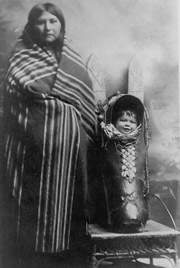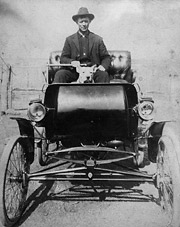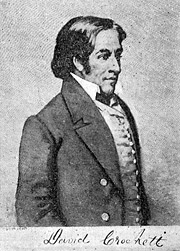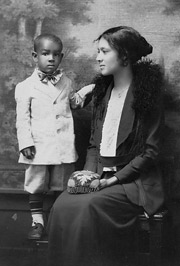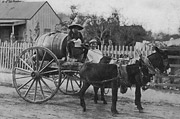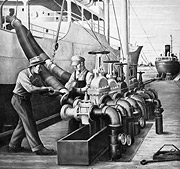 |
|||||||||||||||||

The Portal to Texas History
|
The Internet helps us keep in step with the present but, increasingly, it also affords us gateways to the past. One of the best places online to explore Texas' past is the Portal to Texas History (texashistory.unt.edu), created by the UNT libraries' Digital Projects Unit. The portal provides unprecedented digital access to materials brought together from archives, historical societies, libraries, museums and private collections from Denton to the Rio Grande and all around the state. Even small libraries and individual collectors, whose treasures otherwise might never appear online, are participating. Something for everyone
"Texas history has a lot of fans around the world, so this seemed like an obvious service to provide," says Cathy Nelson Hartman ('67, '91 M.S.), assistant dean of libraries for digital and information technologies. That's why Hartman and her team decided to make the portal a resource for everyone from elementary school students and lifelong learners to history scholars and researchers. Importantly, the portal breaks down accessibility barriers when it comes to rare items, according to Hartman: "Many printed materials are fragile, and often institutions only allow credentialed scholars to see them, but when we put them online even children can see them."
The portal emphasizes primary source materials — that is, materials such as diaries, firsthand accounts, illustrations, newspapers, photos, original documents, maps, personal letters and other items that reveal history from the perspectives of those who lived it. The portal includes:
Making it easy
Like to browse? The portal's subject categories and numerous subcategories make browsing fun and engaging. Want to peruse the 1850 Texas Constitution? Just click on "Browse," then "Government and Law" and then "Constitutions." You can also browse by collection, contributing institution and era. Researchers particularly appreciate using the portal's search functions to find resources and to search within specific books and documents. "It really makes a difference having full-text search capability," Hartman emphasizes. From a technical standpoint, a lot of hard work goes into making the portal user friendly. Delicate handling of fragile materials and the use of high-tech equipment are only the tip of the iceberg.
"Digitization of the originals is the easy part," explains Mark Phillips ('04 M.S.), head of the Digital Projects Unit. "The really difficult part is placing materials online in a usable format, so you can page through a book or zoom in on one area of a map, for example," he says, adding that each item also must be carefully described and categorized with standardized metadata (which facilitates searching and browsing). Doing everything that's necessary takes open-source software, specialized scanning hardware and considerable know-how from the staff and students who work on the project. Partners and grants Other essential work involves acquiring funding and bringing new partners on board, the job of Dreanna Belden ('03 M.S.), the libraries' coordinator of grants and development who works primarily with digital projects.
The growing numbers of institutional and private partners (there were 45 in 2006) not only add to the portal's content, Belden points out, but also make it possible to draw together subject-specific materials from distant locations. A good example is the portal's "Lorenzo de Zavala Online" collection. "We figured out that a historian would have to travel about 2,400 miles to see all of those documents," Belden says. Since the Digital Projects Unit began in 2003, its lab has amassed $500,000 worth of equipment, housed on the third floor of UNT's Willis Library. Initial infrastructure was established with a $200,000 grant from the state's Telecommunications Infrastructure Fund. Grants for specific digitization projects come from public and private sources, including the Summerlee Foundation, whose latest grant has funded the digitization of at-risk historical materials. Organizations with collections that match grant criteria apply to be included on the portal, and those selected send their materials to UNT to be digitized or send their own scans after training. In some cases organizations approach UNT first with requests for digitizing their collections and then work with the librarians to find funding. Growing the project "We load new portal materials at least every two weeks," notes Belden. "We plan on significant growth, and we're very open to working with other people to do that, including private individuals and collectors."
One way the portal grows is through "Adopt a Book Digitally," a program that allows private donors to select books to be added to the portal. "We'll continue to digitize UNT's own collections," Belden adds. More than 1,700 items from the university's archives, government documents, and Rare Book and Texana collections currently are on the portal. The North Texan will be making history, too — its back issues are on a list of projects awaiting digitization. Additional materials from Denton's public library and Courthouse-on-the-Square Museum are going online this year, as is a collection from Texas Woman's University. And plans include developing ways to make historical materials even more accessible online. The future of Texas history looks brighter than ever — and it's right at your fingertips. Treasures of UNT - In conjunction with Denton's sesquicentennial, a Treasures of UNT exhibit is on display in the university archives, Room 430, Willis Library, through Aug. 3. Artifacts cover the decades, including an 1890 registration ticket and a 1920s wool ladies' swimsuit. Spring hours are 8 a.m. to noon and 1 to 5 p.m. Monday through Friday. In the summer, call ahead at (940) 565-2766.
|
||||||||||||||||||||||||||||||||||||||||||||||||||||||||||||||||||||||||||||
